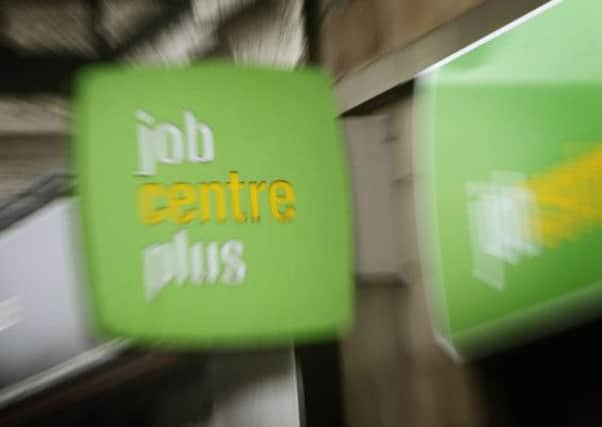Job figures show North-South split


Across Yorkshire, the number of people recorded as out of work rose slightly in the three months to July to 245,000.
In sharp contrast, the number of people out of work in the South-East fell by almost 30,000, taking the unemployment rate to 5.8 per cent compared with 8.9 per cent in Yorkshire.
Advertisement
Hide AdAdvertisement
Hide AdThe North-East has the UK’s highest jobless rate at 10.4 per cent,
In August, just over 146,500 people claimed Jobseeker’s Allowance in Yorkshire, down more than 17,000 on 12 months earlier.
Nationally, the number of unemployed dropped to 2.49 million in the three months to July, helping nudge the jobless rate to 7.7 per cent from 7.8 per cent in the latest piece of positive economic news for the coalition.
The number of people in work in the UK is at a record high of 29.84 million.
Advertisement
Hide AdAdvertisement
Hide AdEmployment Minister Mark Hoban said: “This is a really encouraging set of figures, with the number of people in work rocketing by 80,000 in only three months – a rise driven entirely by a growth in full-time jobs.
“The private sector has created jobs for 1.4 million more people under this Government, and there are now more people employed in the private sector than ever before.”
The unemployment rate has taken on new significance after the Bank of England confirmed that it will not consider raising interest rates from their record low until it falls to seven per cent – which it forecasts will take around three years, barring a spike in inflation.
Martin Beck, UK economist at Capital Economics, said the jobs market appeared to be “fully sharing in the economy’s momentum”.
Advertisement
Hide AdAdvertisement
Hide AdBut he said with plenty of scope to improve productivity, it should take a long time for the jobless rate to fall to seven per cent.
He added: “Although employment rose strongly, more timely evidence from the recent activity surveys suggests that firms are responding to higher demand more by boosting productivity than taking on new workers.”
The figures showed continuing pressure on the public sector, where the number of workers fell 34,000 in the three months to July to 5.67 million.
The total public sector workforce has fallen 104,000 on a year earlier.
Advertisement
Hide AdAdvertisement
Hide AdThe number of private sector workers rose 114,000, hitting 24.17 million, an increase of 380,000 over the year.
The data also showed why politicians in Westminster are increasingly debating families’ standards of living rather than broader economic recovery.
Average weekly earnings between May and July rose 1.1 per cent compared with inflation which is running at 2.8 per cent.
The number of people working part-time because they cannot find a full-time job increased by 25,000 in the quarter to 1.45 million.
Advertisement
Hide AdAdvertisement
Hide AdTUC general secretary Frances O’Grady said: “Despite the Chancellor’s boasts this week, austerity is continuing to cause damage and we are far from a strong and sustained jobs recovery.
“While the headline figures show small improvements, youth employment has fallen sharply and long-term unemployment is still rising.
“There are also still record numbers of people trapped in involuntarily part-time work, with underemployment continuing to soar.
“Across the economy ordinary people are yet to feel the benefits of tentative growth, with wages rising around three times slower than prices.”